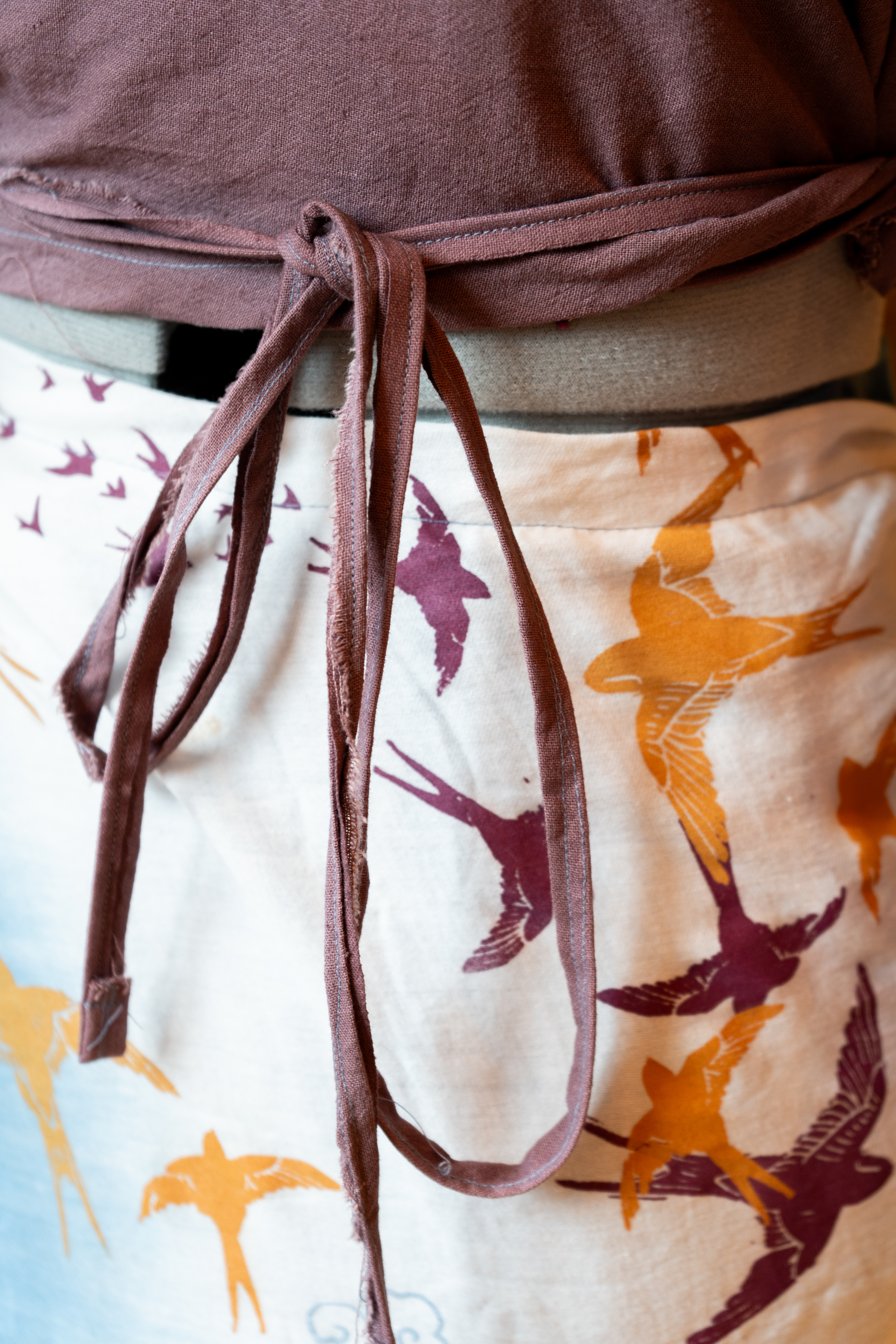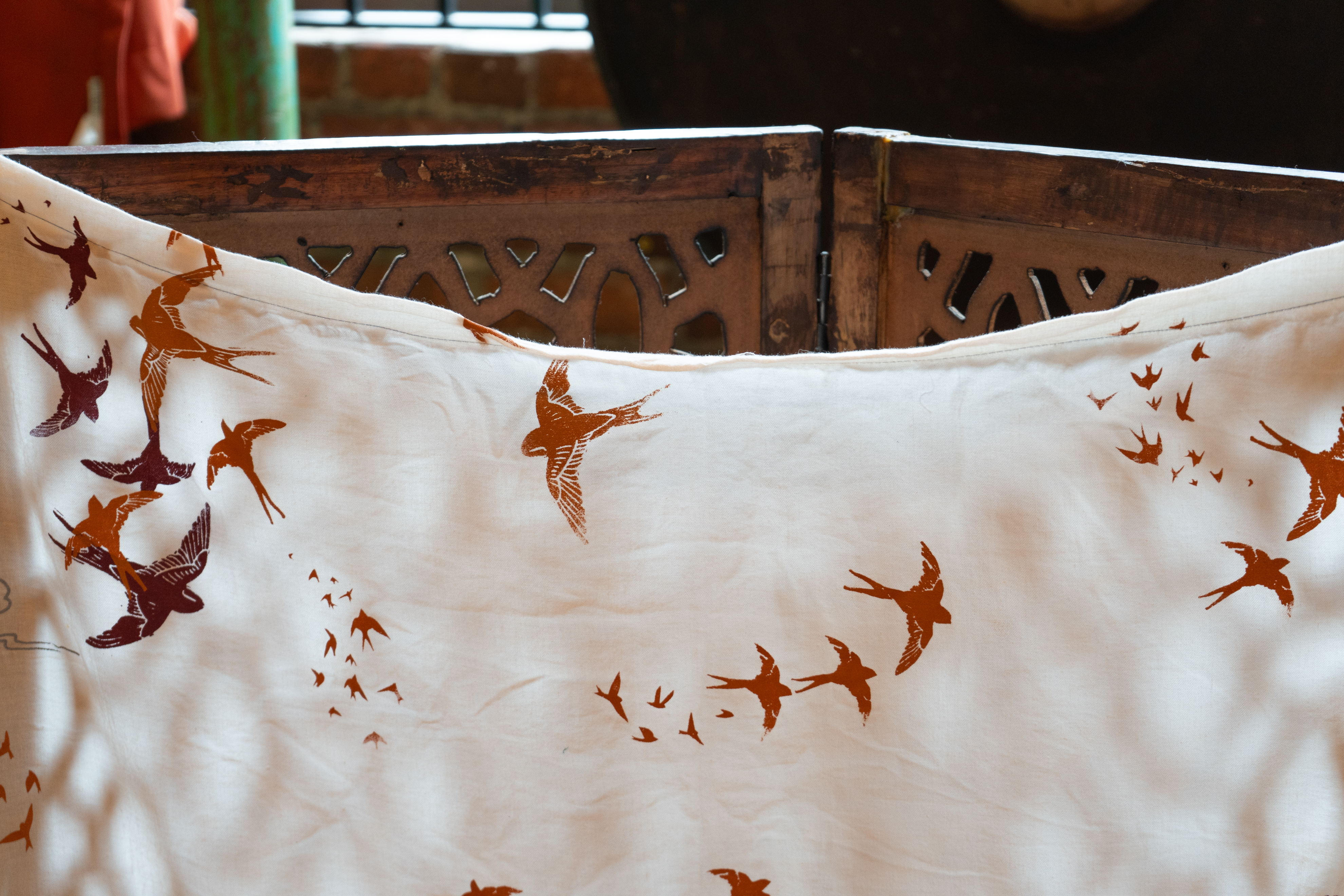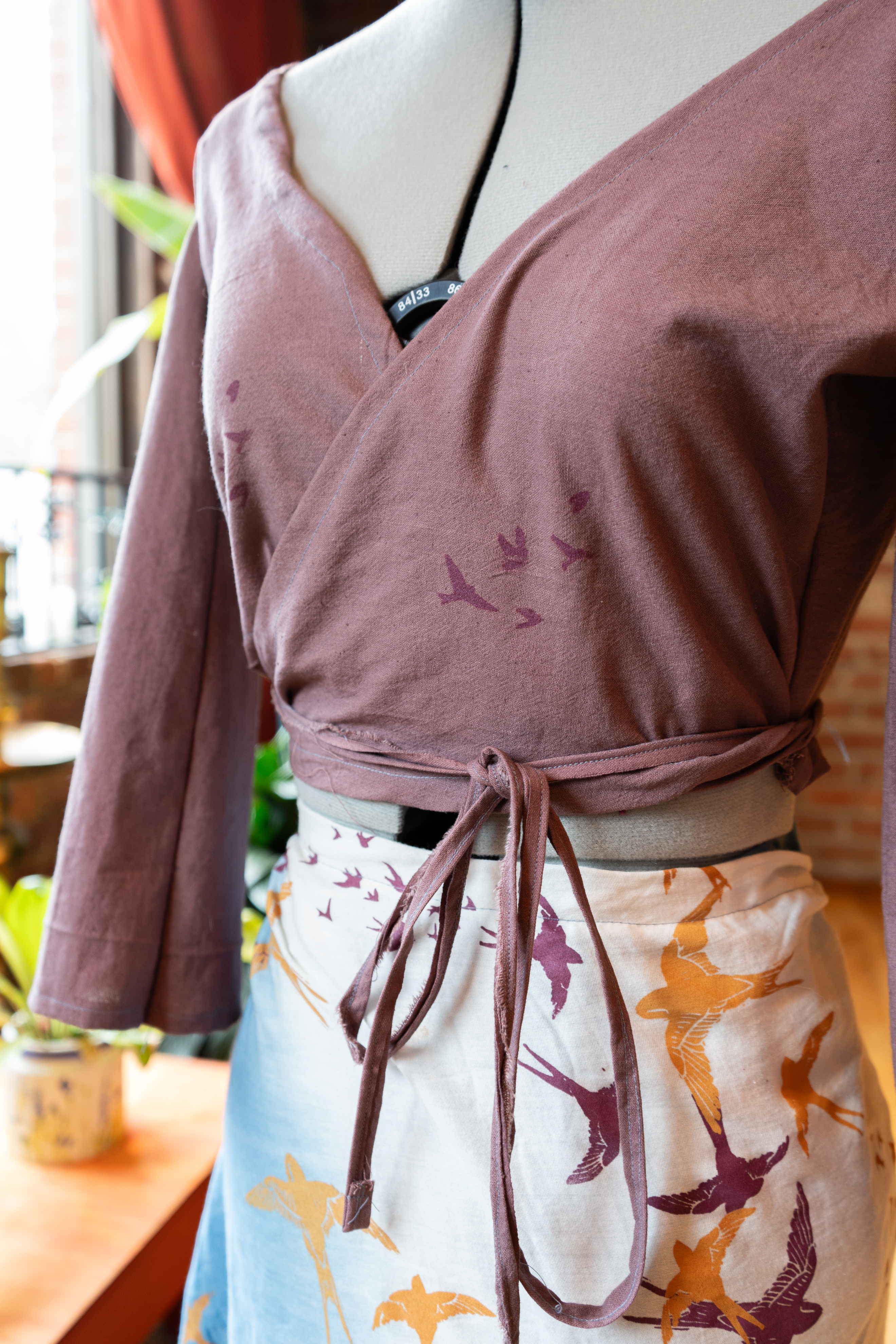
The Bardo Wrap Skirt is a data visualization garment demonstrating the migration patterns of refugees following the 1947 Partition of India and Pakistan. Through the symbolism of flocks of swallows, the size, color, and placement of birds represents the outflowing paths refugees were forced to take by consequence of British colonial exploitation, uprooting them from their generational homes and lives as they knew it.


The data visualizing pattern takes form as a handmade wrap skirt which draws inspiration from traditional South Asian wrap clothing, created from naturally dyed and ethically sourced fabric from India.


The patterning depicts the overlap and converging of refugeeing people as lives were fled and new borders were crossed.


Map Key
Colors indicated the origin of refugee outflow, and orientation indicates which direction that migratory group most likely followed. A cloud symbol is used to indicate the districts with a deficit outflow, implying there were more refugees inflowing.
Colors indicated the origin of refugee outflow, and orientation indicates which direction that migratory group most likely followed. A cloud symbol is used to indicate the districts with a deficit outflow, implying there were more refugees inflowing.
The migration patterns are placed geographically, with each flock of swallows representing one or more districts. All data used from “The Big March: Migratory Flows after the Partition of India,” authored by Bharadwaj, Prashant, Asim Ijaz Khwaja, and Atif Mian.
The Bardo Wrap Skirt serves as a physical representation of the South Asian cultural diaspora and a critique of colonial exploitation.
Much like threads of fabric, generational trauma is interwoven in the lives of Partition refugees and their descendents. To wear apparel imbued with these stories of loss and liminality is to reconcile with the ancestral wounds integral to the fabric of my own identity.
Much like threads of fabric, generational trauma is interwoven in the lives of Partition refugees and their descendents. To wear apparel imbued with these stories of loss and liminality is to reconcile with the ancestral wounds integral to the fabric of my own identity.

